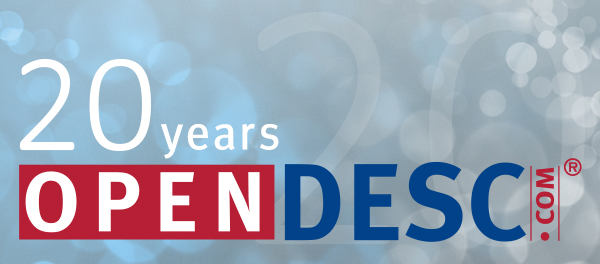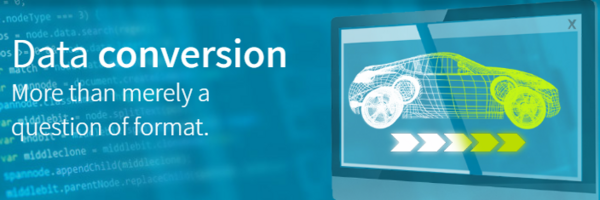
|
|
Automotive suppliers have to commit considerable human and financial resources if they want to make their product data available to customers with the required level of quality. Outsourcing data conversion and data transfer to an external service provider provides a cost-effective alternative. The experts at OpenDESC.com have been helping automotive suppliers optimize their data logistics for 20 years. 
When it comes to data quality and data security in cross-enterprise communications, the requirements of automobile manufacturers have, in recent decades, become ever more stringent. As a rule, system suppliers today have to deliver native data. Native means in the formats of the CAD systems or, to put it more precisely, the respective system versions used by the OEMs – which can vary from vehicle program to vehicle program. The same applies to the initial models and libraries that OEMs make available to their tier 1 suppliers. No OEM today will accept data that does not meet the highest possible quality standards; something that is normally verified with the help of appropriate checking tools. In some cases, they require not only the 3D models but also 2D drawings that are linked associatively to the models. Transferring data has also become more complex over the years. While automotive suppliers used to be able to send their data as individual files via OFTP, OEMs are increasingly demanding that they use a portal or a special client to deliver complete assemblies to their PLM systems. As most suppliers work for more than one OEM, they therefore have to operate multiple clients of this type and also be familiar with the OEMs' ground rules. If automotive suppliers want to develop their own data logistics know-how, they can either take their customers' individual requirements into account during product development and copy the respective development environment, or they can make their internal development processes as efficient as possible and convert the data before it is delivered to the customer. In both cases, they will have to maintain a veritable "menagerie" of CAD systems comprising different versions, settings, initial models and checking tools, constantly train their users and provide their own staff to perform system administration. All of which translates into considerable costs for them. Data Conversion as Cornerstone A cost-effective alternative to maintaining a heterogeneous CAD system landscape is outsourcing data logistics to an external service provider who converts and, if necessary, transfers the data to the OEM. This means that the service provider has to be familiar with the OEMs' exact requirements, and it is precisely here that the strengths of OpenDESC.com's data logistics experts come into play– not to mention our many years of experience. We have been making sure that supplier data reaches OEMs securely and with the required level of quality for 20 years. Over 100 customers in 29 countries around the world rely on our services, including major customers like SKF Automotive Division as wells as numerous smaller suppliers. Some companies, like Witzenmann, have been doing so since day one. 
The Data Exchange Service Center (DESC) was founded in 1998 in response to the suppliers' call for help converting their CAD data to the format of the CAD system CATIA V4 – which was very popular with OEMs at the time – without them having to purchase expensive CAD workstations. Two years later, when nobody was yet giving any though to cloud- or web-based services, PROSTEP created OpenDESC.com, the first data conversion web portal and garnered four innovation awards. OpenDESC.com allows customers to upload the data they want converted and then download the converted data without having to install additional software. A key aspect of our offering is an all-round service that functions like a black box and allows users to avoid being confronted with the growing complexity of data logistics. The conversion of data into all widely used CAD formats remains a crucial element of the data logistics service, with various options available to customers. The most cost-effective option is automated conversion without quality control, which usually takes no longer than 24 hours. It is often used by customers with high-quality original data or in the early stages of development, where speed is of the essence. Our experts provide customers who have higher quality requirements with quality control support for 3D models and 2D drawings, adapt their data to meet OEM-specific requirements and correct any errors that occurred during conversion in the target system. To make it easier to reuse data, OpenDESC.com offers an additional option in cooperation with Elysium that includes the conversion of parametric information and features. This option is also of interest to companies that want to use our conversion service within the framework of migration projects, e.g. when switching to a new system. Data migration is another mainstay of OpenDESC.com. It includes not only actual conversion but also support and advice regarding preparations for migration and the definition of the best possible migration strategy. OpenDESC.com provides customers with support regardless of whether they want to migrate several terabytes of data in one fell swoop, migrate their data incrementally or migrate only the data they currently need. Our experts develop the appropriate methods and processes needed to do this, including adapters, check routines and repair processes for a highly automated conversion pipeline. They also monitor the success of the migrations with the help of corresponding key performance indicators. Expanding the Range of Services PROSTEP has gradually expanded the range of services offered by OpenDEC.com in line with market requirements to include additional services such as data transfer. The transfer of data is becoming ever more important for automotive suppliers due to the increasing significance of data security and the growing complexity of communication processes. High-profile customers like SKF Automotive Division and Sensata, a sensor manufacturer, have decided to work together with PROSTEP because there is practically no other service provider out there that can offer data conversion and the organization of data exchange operations with OEMs and tier 1 suppliers from a single source. OpenDESC.com's data transfer service relieves automotive suppliers of all the tasks involved with data exchange. All they have to do to specify who is to receive what data. PROSTEP assumes responsibility for ensuring that the data reaches the recipient on time and using the appropriate channels. The exchange is handled by our secure data exchange solution OpenDXM – either automatically via OFTP/OFTP2 over an ENX connection, via our web portal, or manually via the automobile manufacturers' supplier portals. Our experts know the contact persons at the receiving end and create the corresponding exchange profiles. Personalized access ensures maximum protection of intellectual property. The data exchange solution logs all data exchange operations, which means that customers can always provide evidence of which clients or suppliers received what data and when. As an authorized/certified partner to Ford, OpenDESC.com also handles all data communications between the OEM and its suppliers. This includes exporting data from the OEM's PLM systems on behalf of the suppliers, converting the data, deriving manufacturer-compliant drawings and delivering the data back to the systems. Use of the data transfer service goes a long way toward enabling fast and flexible integration between OEMs and suppliers and, should the need arise, also makes it easier to "unbundle" partner relationships. Because the experts at OpenDESC.com are thoroughly familiar with the OEM-specific IT environments, they are also able to provide customers with remote support relating to every aspect of installing OEM-specific software tools. We not only help you with the installation but also ensure that your system landscape always has the release level that the respective OEM specifies. The support provided for CAD and PDM infrastructures also includes a hotline as specified by the OEMs. This makes a major contribution to minimizing administrative overhead. Outsourcing data conversion and data transfer not only saves automotive suppliers the costs associated with purchasing and maintaining CAD systems and data exchange tools, continually adapting the systems to the OEMs' changing requirements and training the staff tasked with managing and operating the systems. It also increases their productivity as they can design and optimize their internal processes more efficiently in a homogeneous system landscape independent of customer specifications. The use of OpenDESC.com also guarantees a consistently high level of data quality – without which no supplier today would receive any further orders – and maximum data security during data transfer. In addition, the logging and archiving of orders ensure maximum transparency. Another advantage that should not to be underestimated by suppliers operating worldwide is that they can use the data logistics service more or less around the clock. |
|
| © PROSTEP AG | ALL RIGHTS RESERVED | IMPRESSUM | DATENSCHUTZERKLÄRUNG | HIER KÖNNEN SIE DEN NEWSLETTER ABBESTELLEN. |

